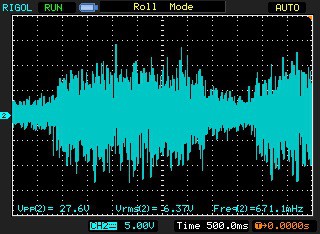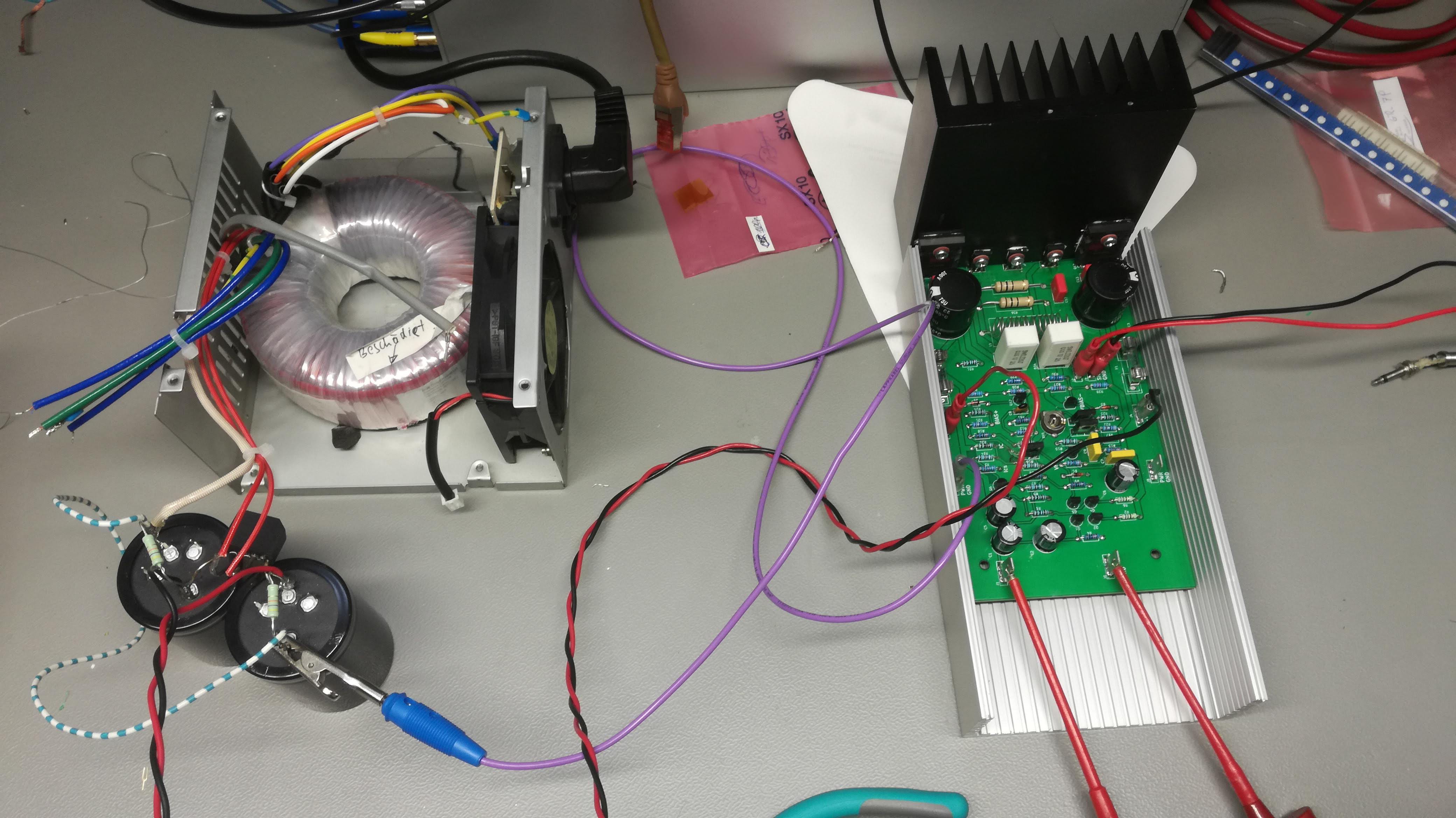
For the first try, this made me quite happy. I'm not sure how good it really is, but I guess in some time I'll need to find a quality audio test equipment. So far, I'm only having fun building it.
All this time, I was powering my amp using +/-30V/5A Rigol power supply. Obviously, this is not something permanent, and I'd need to build a separate power supply. Since I'm striving for the Hiest of Fies, switching mode supplies are out of the question. This means a big ass transformer.
Previously, I have calculated that I need 120VA source power, but then I thought to myself, why? Yeah, the idea was to build a high power amp. But, let's be honest, I will probably never use it. During the sound test, I found out that even a couple of Watts is already to loud for my delicate ears, and 100W capable speakers are heavy and expensive, I decided to lower down my power expectations. How much? As much as my easily obtained trafo can give :)
So, in my company's scrap room, I got nice toroidal, bipolar 19.5V/2.6A transformer, perfect for my project. This translates to 101.4VA output power, and with the efficiency of 66%, I can expect some 66W output power. Not bad for saving an effort of buying an expensive trafo. And with a notion, that design is easily applicable for higher supply voltages, if I ever find a more powerful trafo. Anyways, I dug out some bridge rectifiers and thick elkos, and contrapted myself a lovely little full-wave rectifier. I was lucky to find some 4500uF caps, so power demands should be satisfied.

Here you can see the power supply I've built. The trafo has a sticker saying 'beschädigt' meaning it has some insulation damage probably due to the fall from the table. Nothing I couldn't fix with a nail polish. I've put it in an old ATX housing, which is fortunate cause it already contains all necessary power filtering and PTC protection (small board next to the power inlet). I haven't made a dedicated board for caps and rectifier, so it just sits in the air now. I'll think of it when I build a final enclosure. On top of that, I've put some 20k resistors in parallel with caps (it's always a good idea to put some bleeding resistors when using such huge caps).
In the meanwhile, I'm off to build some preamps and, ofc, the left power channel.
 Pero
Pero
Discussions
Become a Hackaday.io Member
Create an account to leave a comment. Already have an account? Log In.